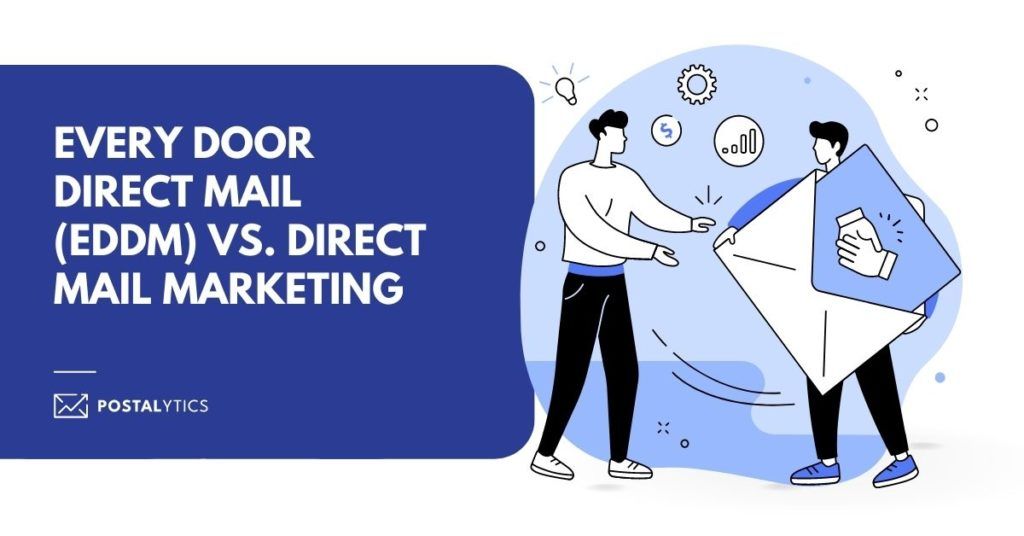
As a leading direct mail marketing platform, we spend a lot of time studying the effectiveness of popular marketing channels.
Let’s take a closer look into the two exciting and emerging marketing channels – Every Door Direct Mail and Personalized Direct Mail Marketing.
Direct mail is the talk of the town lately as digital channels face an uncertain future. Marketers see direct mail as a way to cut through the digital noise and leave a lasting impression on their prospects. Studies have repeatedly shown that direct mail unlocks higher recall, has better response rates, and builds stronger relationships between brands and consumers.
Marketers want to know which channel has higher open rates and which one is faster and more affordable at scale. So, let’s take a closer look at both channels and find out which is best for your business.
What We’ll Cover
- What is Every Door Direct Mail (EDDM)?
- What is personalized direct mail?
- Direct Mail vs EDDM: Which channel do marketers prefer?
- Design and Printing Requirements
- What About the Delivery Time?
- Price of Direct Mail Campaigns vs. EDDM
- Personalization of Each Direct Mail Piece
- Marketing Automation
- Response Rates
- Requirements for EDDM vs Direct Mail
- Does personalized direct mail win every time?
What is Every Door Direct Mail (EDDM)?
Every Door Direct Mail (or EDDM for short) is a United States Postal Service (USPS) product that lets marketers deliver untargeted mail promotions to every resident on a particular USPS route.
Marketers can flood entire neighborhoods and towns with EDDM letters, postcards, flyers, and other direct mail formats. In addition, EDDM can help promote local businesses in their own communities by sending promo mail to everyone in town, letting them know that your local business is ready to take customers. It’s a form of geo-location marketing across a carrier route with no defined audience.
What is personalized direct mail?
Personalized direct mail marketing may look similar to EDDM at first glance, but it’s very different in its nature and the marketing results it can produce. Direct mail has been around since the dawn of time, spanning millennials into the past. Marketers love using direct mail service because it simply works and always has been working.
Today, you can avoid having to physically assemble hundreds of letters and take them down to your local post office. Forget about expensive design agencies and nerve-wracking postal requirements.
Instead, platforms like Postalytics can let you fully automate and personalize your entire direct mail marketing. Plus, we’ve developed thousands of integrations that can connect to your CRM or Zapier and bring about an unstoppable marketing channel.
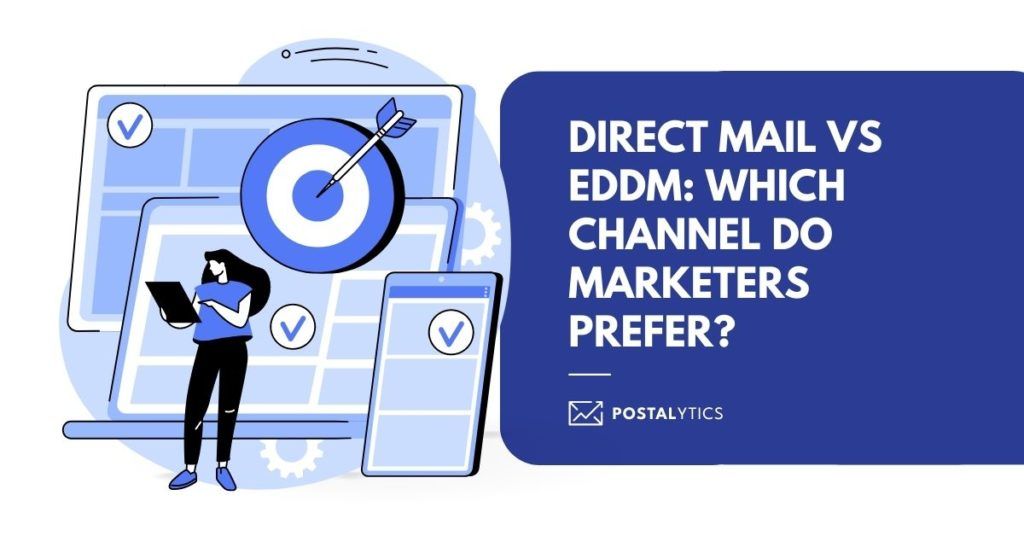
Direct Mail vs EDDM: Which channel do marketers prefer?
Direct mail marketing and EDDM both have their advantages and disadvantages. While they both let marketers send bulk mail, the primary difference comes from their features for targeting and personalization.
Marketers rarely ever use both of these channels. And this is true for many reasons.
- One makes personalization easy for marketers
- One is cheaper but less targeted and more wasteful
- One targets a specific audience; the other targets a carrier route
- One has strict minimum quantity requirements; the other doesn’t have any
- One lets you track, analyze and improve your campaigns; the other doesn’t
- One of these channels is an unofficial synonym for junk mail and unwanted promotion
These represent some of the most important distinctions. So, let’s discuss each of these points in more detail.
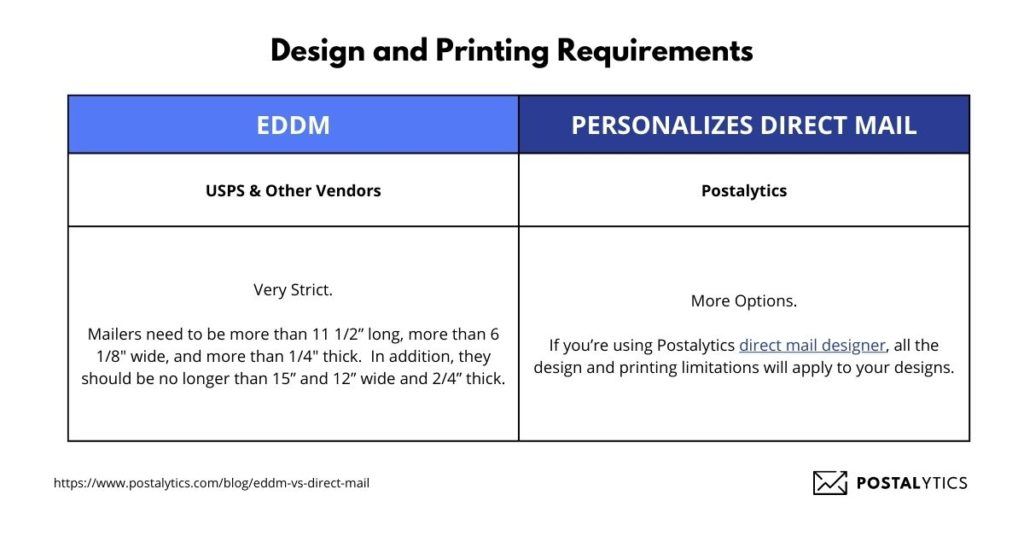
Design and Printing Requirements
When it comes to personalized direct mail, marketers will face almost none or very few design requirements.
You don’t face limitations on the minimum number of mail pieces. With Postalytics, you can send a single postcard or ten thousand letters at a time just as easily. There’s no cap. If you’re using Postalytics direct mail designer, all the design and printing limitations will apply to your designs.
On the other hand, EDDM enforces strict size requirements. Mailers need to be more than 11 1/2” long, more than 6 1/8″ wide, and more than 1/4″ thick. In addition, they should be no longer than 15” and 12” wide and 2/4” thick.
What About the Delivery Time?
Delivery times tend to be much longer when it comes to sending EDDM campaigns.
Marketers can’t track the EDDM or precisely measure its impact. It’s like putting up a billboard and hoping for the best.
Personalized direct mail is usually in the printers the very next morning after you’ve hit the send button in your dashboard. Then, it takes around 5-7 days to reach your customer, depending on the postage class. You can track each piece every step of the way. So you’ll know exactly when someone has opened your letter and is ready for a sales call or a direct message.
Price of Direct Mail Campaigns vs. EDDM
EDDM is a cheaper option per individual piece, but it produces much more waste.
If we avoid the environmental concerns of carpet bombing postcards onto an entire USPS route, the price of EDDM is somewhat easy to misunderstand. While being less expensive per individual piece, EDDM has poor response rates and might end up costing you more money overall.
Meanwhile, Direct mail comes with state-of-the-art tracking software, free design templates, CRM integrations, QR codes and pURLs, marketing support content, and pricing that’s affordable for SMB businesses and marketers.
Postalytics has taken direct mail to a whole new level by offering pricing that scales back as you send more mail. If this channel delivers good results for you, you can unlock a nitro boost for your campaign with a cheaper per piece price (PPP) on larger shipments.
As your marketing results scale up, your marketing expenses scale down.
Check out the full Postalytics pricing guide.
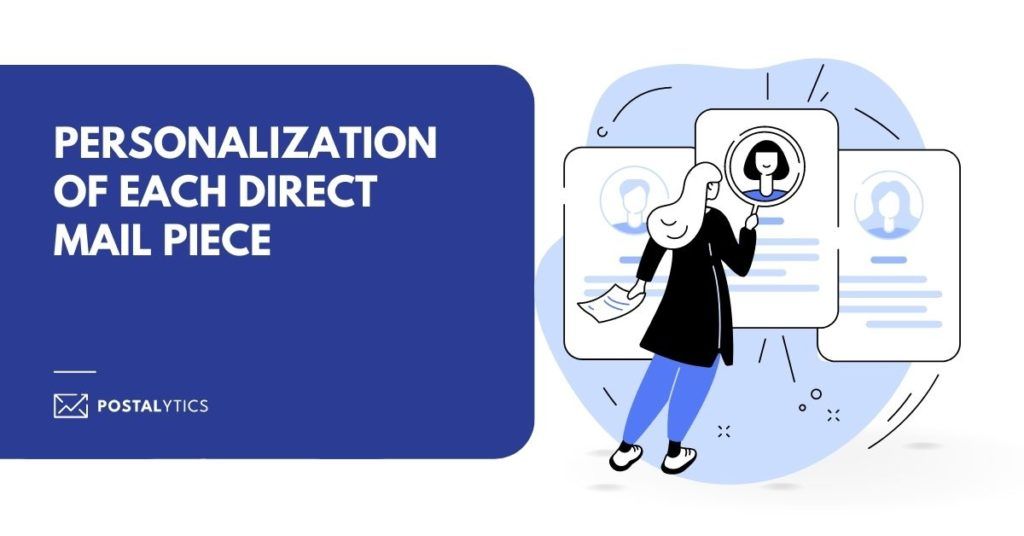
Personalization of Each Direct Mail Piece
EDDM offers little to no personalization options. You can design a postcard or a letter and ship it out to a selected USPS mailing route. And that’s where the story ends with EDDM.
Direct mail, and especially Postalytics-powered direct mail automation, can unlock the wonders of personalization for any-level marketer. You can select various triggers to decide when your mail is being shipped. You can change the content based on incoming CRM data, and you can embed pURLs and QR codes that will lead to a website, ecommerce shop, or further down the sales funnel in some other way. The best thing here is that you can track customers throughout their journey and give them a gentle nudge once they interact with the mail piece.
Marketing Automation
The next big thing in marketing is direct mail automation.
We have already mentioned automation throughout this article, so let’s talk details now.
EDDM is a send-and-forget type of business, so not much automation is available. On the other hand, automation is the most attractive part of working with direct mail.
You don’t nee a team of designers, printers, and copywriters to send your first direct mail campaign. With automation, you can schedule your promotion and integrate other software into your marketing workflows. For example, if your prospect’s birthday is near or a hot piece of real estate miraculously drops back on the market, you can automate a marketing flow that mails a postcard to your prospect, leading them to your offer.
Automation helps you free your time and focus on what truly matters while capitalizing on the full potential of your business.
Response Rates
Personalized direct mail marketing offers double the response rate to that of EDDM, if not 300% more in some cases.
These numbers make a lot of sense. Marketing is a game of getting the right solution in front of the person that is actually searching for it and will benefit from that solution. For example, If you try to sell your financial services to a student who can barely afford rent, you’ll just waste your time and money.
On the other hand, if you send a direct mail to everyone who signed up for your free trial offer and opens your weekly emails, you’ll probably hit the nail on the head with a high number of prospects.
Requirements for EDDM vs Direct Mail
You can send as many or as few mail pieces as you’d want with personalized direct mail.
Every Door Direct Mail is a different story. You can only send a minimum of 200 pieces and a maximum of 5,000 pieces a day with EDDM.
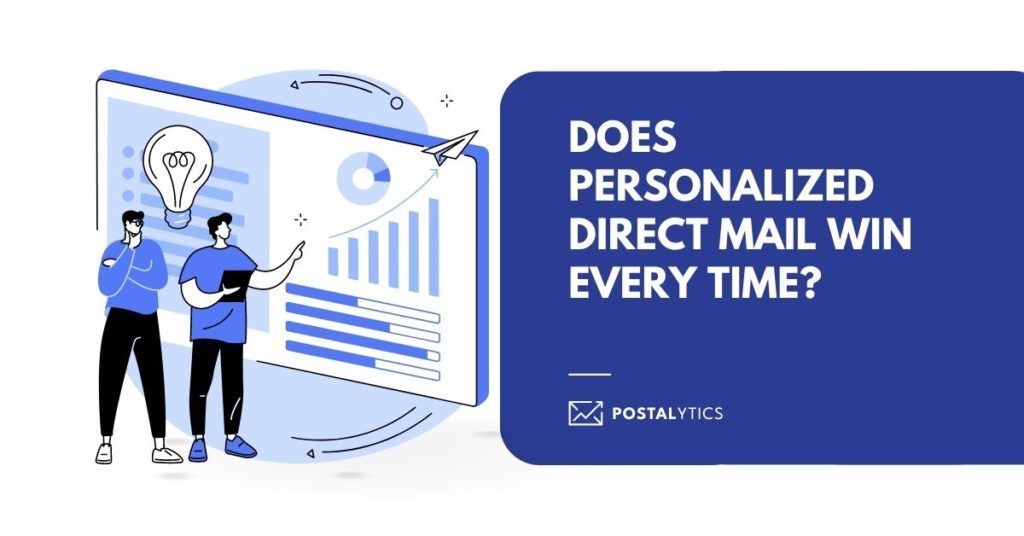
Does personalized direct mail win every time?
Every Door Direct Mail still has its place in the world of marketing. It’s a solid direct mail service offered by USPS.
However, the hype has turned EDDM into something that it’s certainly not. The appeal of EDDM is similar to the appeal of all-you-can-eat buffets. It sounds good, but when you start eating, you realize that burgers, croissants, and sushi don’t belong on the same plate.
Every Door Direct mail is a mixed bag but has one positive use case.
If you’re a local service that would appeal to almost everyone, then some EDDM marketing would make sense. For example, if you’re a new local supermarket or local car wash, then letting everyone in the neighborhood know you’re open could get you started.
However, if you’re running a professional service or an eCommerce shop, connecting with qualified leads makes much more sense and leads to better business results. And finally, we can’t stress this enough, EDDM is wasteful and leaves a lot of trash behind.
Personalized direct mail is precise and tends to linger in your prospects’ homes for weeks on end, creating several touchpoints for everyone that walks past.
So, what are you waiting for? Get your free Postalytics account.
About the Author

Dennis Kelly
Dennis Kelly is CEO and co-founder of Postalytics. Dennis joined Boingnet, the predecessor to Postalytics, in 2013. Boingnet was focused on providing print and direct mail marketing service providers the ability to add digital marketing channels to their direct mail campaigns. Postalytics is Dennis’ 6th startup. He has been involved in starting and growing early-stage technology ventures for over 30 years and has held senior management roles at a diverse set of large technology firms including Computer Associates, Palm Inc. and Achieve Healthcare Information Systems.

